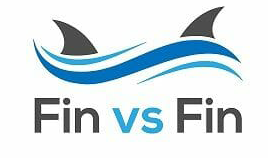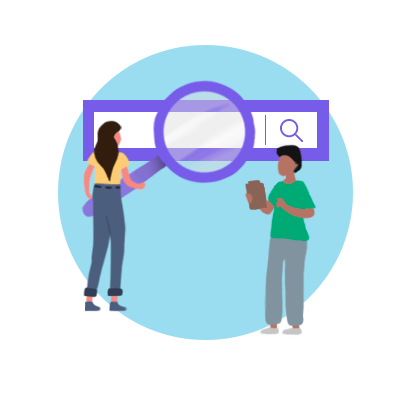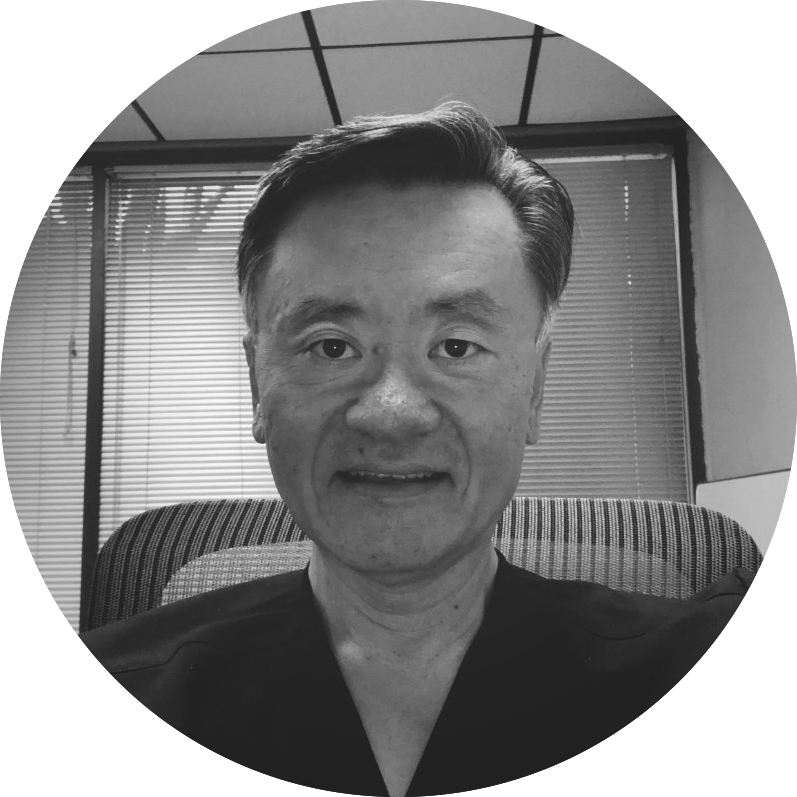“Finoxidil” describes a topical hair loss treatment that combines the ingredients minoxidil and finasteride, two FDA-approved treatments for certain hair loss conditions. Finoxidil typically requires a prescription and while the ingredients are FDA-approved, the treatment itself is not.
Research notes that combining topical minoxidil with oral finasteride tends to improve hair growth and density, as well as reduce hair shedding. However, some individuals experience side effects, such as decreased sex drive and erectile dysfunction, that lead to them stopping treatment. Combining these ingredients in a topical treatment improves overall hair density and growth, but it also reduces the risk of certain side effects.
In this article we discuss what finoxidil is, how the treatment works, as well as its potential side effects. In addition, we compare several brands that offer this topical treatment, so you can decide which one may work best for your needs.
How to Use Finoxidil
In general, finoxidil comes in spray or gel form and is typically applied to the scalp once per day. Always follow package instructions carefully.
What Is Finoxidil?
Finoxidil is a term that some physicians use to describe compounded formulas that contain both finasteride and minoxidil in a single product. Most often, finoxidil is a topical solution that can be applied directly to the scalp.
Depending on the brand, finoxidil may come in different strengths and different forms, including a spray or gel. In some cases, the finoxidil strength can be customized to best suit your needs.
Related reading: XYON Health Topical Finasteride- Does It Work for Hair Loss?
What Are the Ingredients in Finoxidil?
While ingredients may vary based on brand, in general, they may include different strengths of finasteride and minoxidil, the active ingredients, as well as alcohol, propylene glycol, and citric acid, the inactive ingredients.
Finasteride
Finasteride, typically prescribed as an oral medication, inhibits the activity of an enzyme called 5-alpha reductase, which converts testosterone into dihydrotestosterone (DHT), a type of hormone called an androgen. DHT contributes to pattern hair loss by shrinking hair follicles and shortening their growth phase.
Since finasteride reduces the levels of DHT in the scalp and hair follicle, it can reverse hair follicle shrinkage, boost hair density, and help prevent further hair loss.
Minoxidil
Minoxidil, the generic name for Rogaine, is a topical hair loss solution that’s applied directly to the scalp. It’s FDA-approved as an over-the-counter (OTC) treatment for both male and female pattern hair loss.
This medication is a vasodilator, meaning that it relaxes and widens blood vessels, allowing more blood to flow through them. With proper application, minoxidil is thought to increase blood flow to the hair follicles, supplying them with additional oxygen and nutrients to promote hair growth. Additionally, minoxidil may prolong the anagen, or growth, phase of the hair follicles, allowing them to grow for longer before falling out.
Related reading: Best Finasteride Alternatives for Hair Loss
Does Finoxidil Work?
Finoxidil combines the action of finasteride and minoxidil. Research notes that for some individuals, especially those who have experienced side effects associated with oral finasteride or are worried about potential side effects, finoxidil may be an appropriate treatment option that works about as effectively as oral finasteride.
Specifically, in a small study that examined finoxidil use in 50 individuals who had previously taken oral finasteride and used topical minoxidil for about two years:
- About 84% of individuals were able to maintain good hair density when switching to finoxidil-only treatment
- 4 out of 5 individuals who had discontinued oral finasteride use for 8-12 months and then used finoxidil treatment experienced good improvement in hair density
- Overall, finoxidil was well tolerated, with no serious side effects noted
Do Minoxidil and Finasteride Work Better Together?
Minoxidil primarily helps with hair regrowth in individuals already experiencing the effects of pattern hair loss. Finasteride, on the other hand, helps prevent additional hair loss and, in some cases, encourages hair regrowth. When used together, minoxidil dilates the blood vessels in the scalp, which may help finasteride absorb more effectively.
One study had individuals with male pattern hair loss apply either 3% minoxidil or 3% minoxidil mixed with 0.25% finasteride on a daily basis for 24 weeks. At the end of the study, researchers evaluated overall hair density and diameter.
The combination group fared significantly better than the minoxidil-only group, and about 90% of the minoxidil and finasteride users experienced moderate to significant hair improvements. In addition, the combined treatment was well tolerated, making it an appropriate option for individuals who have experienced side effects, or who are concerned about experiencing side effects.
Related reading: How to Reduce the Side Effects of Finasteride
What Are the Side Effects of the Drug Finoxidil?
Side effects associated with finoxidil may include:
- Scalp itching or burning
- Skin flaking
- Skin irritation
- Redness
Finoxidil should not be handled by children or individuals who are pregnant or breastfeeding. After applying the product, be sure to wash your hands thoroughly. Prior to beginning treatment, be sure to let your healthcare provider know if you have any health conditions, or are taking any prescription or OTC drugs, supplements, or vitamins.
If you experience any chest pain, dizziness, swelling, symptoms of depression, or severe irritation, seek urgent medical care.
Where to Get Finoxidil Online
We’ve compared four companies who offer a topical finoxidil product, including Keeps, Hims, Strut, and Happy Head, so you can decide which product may work best for your needs.
The Most Affordable Option: Keeps 2-in-1 Topical Finasteride & Minoxidil Gel
Keeps is an online platform that focuses exclusively on hair loss treatments. All of their offerings include FDA-approved ingredients, including the once-daily, 2-in-1 Topical Finasteride & Minoxidil Gel. It’s one of the most affordable finoxidil options out there, coming in at about $30 per month for a 3-month subscription.
This finoxidil gel contains .25% finasteride and 5% minoxidil. While this isn’t the most potent option out there, with consistent use, it typically produces results within 4 to 6 months, according to the company.
Related reading: Keeps Topical Finasteride Review
The Best for Easy Application: Hims Topical Finasteride & Minoxidil Spray
Hims is a telehealth company that provides health services for those assigned male at birth, ranging from erectile dysfunction (ED) and anxiety to hair loss. One of the company’s offerings is topical finasteride and minoxidil spray, a once-daily, quick-drying fine mist spray containing 0.3% finasteride and 6% minoxidil.
Related reading: Hims vs. Propecia- Which Finasteride Is Better?
The Most Customizable: Strut Finasteride Hair Loss Formula
Strut offers online health services, including hair loss prevention, sexual health, and dermatologic care. The platform’s finasteride hair loss formula is highly customizable with an up to 5-in-1 formula. Along with finasteride, your formula may include prescription-grade minoxidil, tretinoin, fluocinolone, and/or biotin. Dose options include 0.1 to 0.25% for finasteride, 0.0% to 7.5% for minoxidil, 0.0% to 0.0125% tretinoin, and 0.01% fluocinolone.
Related reading: Does Strut’s Topical Finasteride Work?
The Most Potent: Happy Head Topical Finasteride & Minoxidil
Happy Head is a telehealth platform that’s backed by a team of board-certified dermatologists specializing in hair growth. Their topical finasteride and minoxidil formula is the most potent available, with up to 8% minoxidil and 0.3% finasteride. It’s also fully customizable, with additions including retinoic acid and hydrocortisone.
Related reading: Does Happy Head Topical Finasteride Work for Hair Loss?
Finoxidil Reviews From Customers
Individuals who have used finoxidil or a combination of oral finasteride and topical minoxidil from various brands tend to report significant hair growth, with reduced side effects when using the topical treatment.
The Verdict: Is Finoxidil Effective?
Finoxidil may be an effective choice for those who aren’t satisfied with the results from minoxidil or finasteride alone, or are experiencing oral finasteride-related side effects. | |
Finoxidil may provide better results than either finasteride and minoxidil when used alone by targeting both DHT and the physiological processes involved in hair growth. Plus, as a single, topical medication, finoxidil can streamline your hair care routine and may reduce the risk of side effects associated with oral finasteride.
While it is more expensive than solely using topical minoxidil, it is less expensive than a combined oral finasteride and topical minoxidil treatment, making it a great middle-ground option for those wanting to maximize treatment effectiveness, with reduced costs and decreased risk of side effects. | |
Frequently Asked Questions (FAQ)
How much does finoxidil cost?
The cost of finoxidil can vary, but ranges from around $30 per month to around $80 per month through telehealth services.
What’s the typical dosage of finasteride and minoxidil in finoxidil?
The typical amount of finasteride in finoxidil is 0.25% to 0.3%, and the typical amount of minoxidil in finoxidil is 5% to 8%. Finoxidil is typically applied once daily.
Is finasteride better than minoxidil?
Finasteride and minoxidil work differently, so one may work better for certain individuals. In general, research has noted that oral finasteride tends to work better than topical minxoidil. However, combined treatments tend to lead to the best results.
How can I regrow my hair naturally?
To naturally regrow your hair, you may consider using hair thickening products, doing a weekly hair mask, taking hair supplements, giving yourself a daily scalp massage, and avoiding hair care products with ingredients like silicone or phthalates.
Is topical finasteride safer than oral?
In general, research notes that topical finasteride is associated with fewer side effects than oral finasteride, and has been shown to work just as effectively.
Learn More About Hair Loss
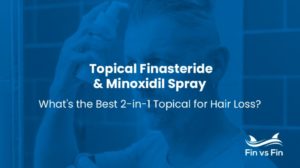
Topical Finasteride and Minoxidil Spray Review – What’s the Best 2-in-1 Topical for Hair Loss?
If you’ve been looking into treatment for pattern hair loss (androgenic alopecia), you may have come across the ingredients minoxidil and finasteride, which are the two most popular and clinically-backed treatments for thinning hair that come in both oral and topical form. Brands like Hims,

Tretinoin and Hair Loss: Does It Help Regrow Hair?
Key Takeaways Topical tretinoin may support hair growth by increasing circulation to the scalp and boosting cell turnover. Up-to-date clinical research indicates that tretinoin can enhance the effects of minoxidil for hair growth. The most common side effects of tretinoin are skin irritation, dryness, and
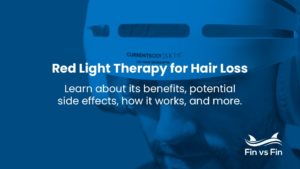
Red Light Therapy for Hair Loss: Does It Promote ReGrowth?
Key Takeaways Red light therapy can safely and effectively treat hair loss in some individuals. It typically takes four to six months to see results from red light therapy. Red light therapy can promote regrowth and hair retention. While many types of red light therapy

How to Get Oral Minoxidil Online: A Complete Guide
Key Takeaways Oral minoxidil is a good option for individuals with androgenic alopecia who experience side effects from topical minoxidil or who are not seeing the results they hoped for. You can get an oral minoxidil prescription online by completing a virtual consultation with a

Does High Blood Pressure Cause Hair Loss?
Key Takeaways While some studies do show a potential association between high blood pressure and hair loss, more research is still needed. High blood pressure can affect blood flow, potentially impacting blood flow to the scalp and hair follicles. Some medications used to treat high
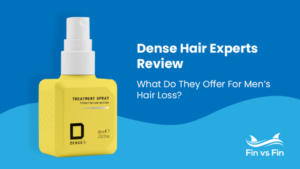
Dense Hair Experts Review: What Do They Offer for Men’s Hair Loss?
Dense Hair Experts Overview Price: £59.99 (or £47.99 on subscription) Prescription products: Finasteride, dutasteride OTC products: Minoxidil, shampoo, conditioner, vitamins, styling products Active ingredients: Finasteride, dutasteride, minoxidil Potential side effects: Itching, redness, flaking Who it’s best for: Individuals experiencing male pattern baldness Go to Site→
